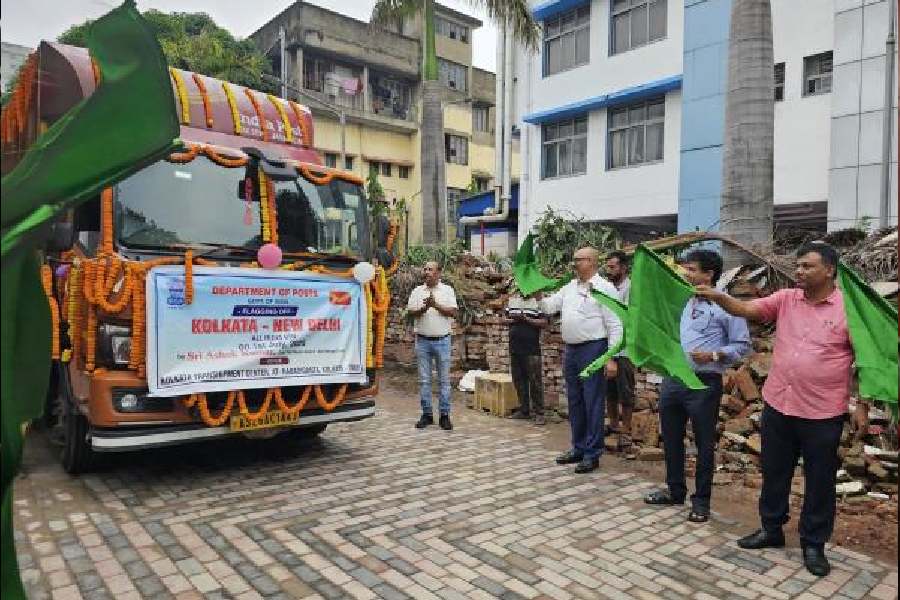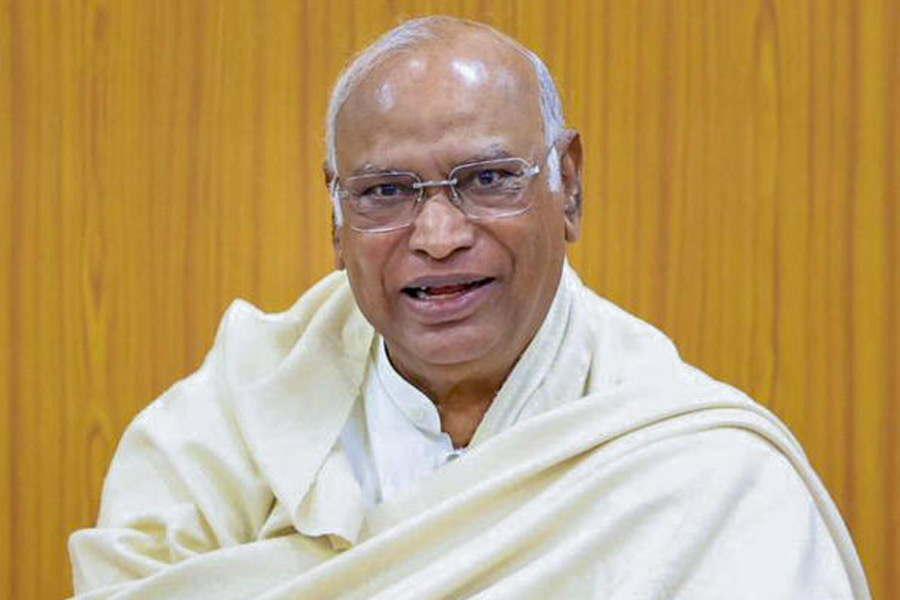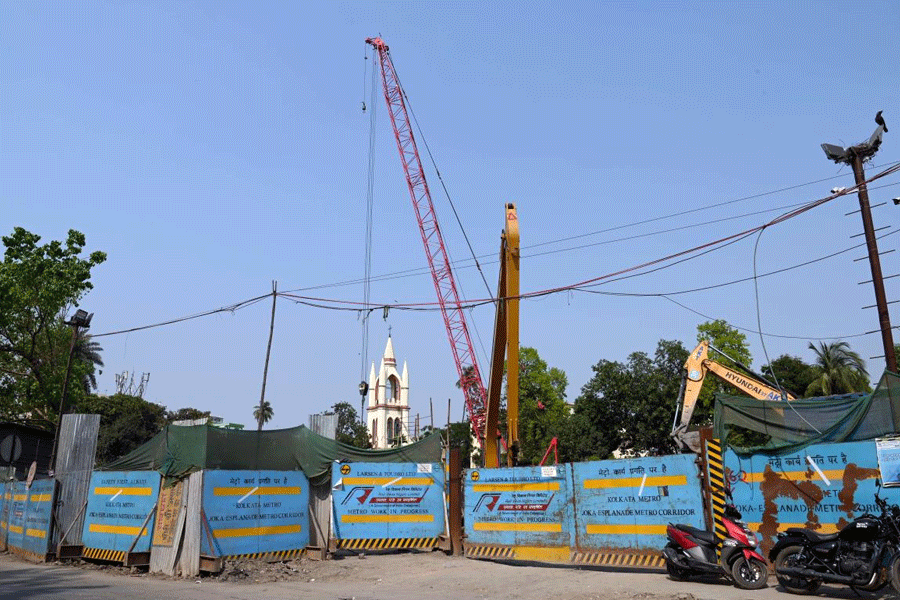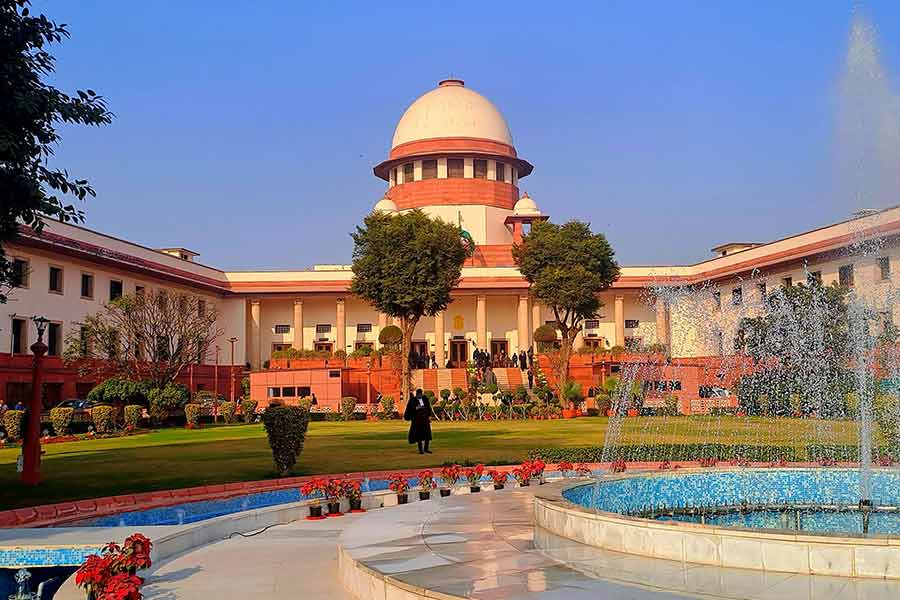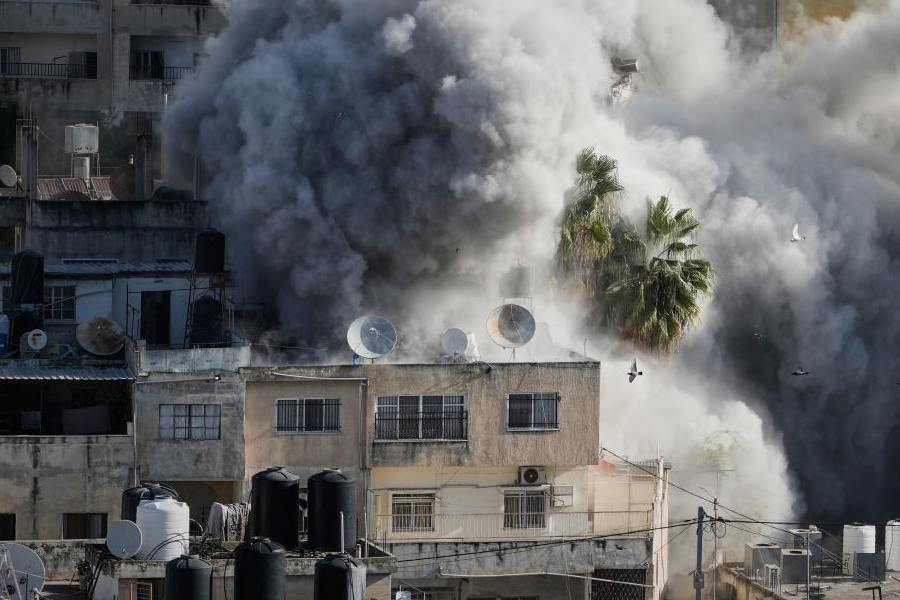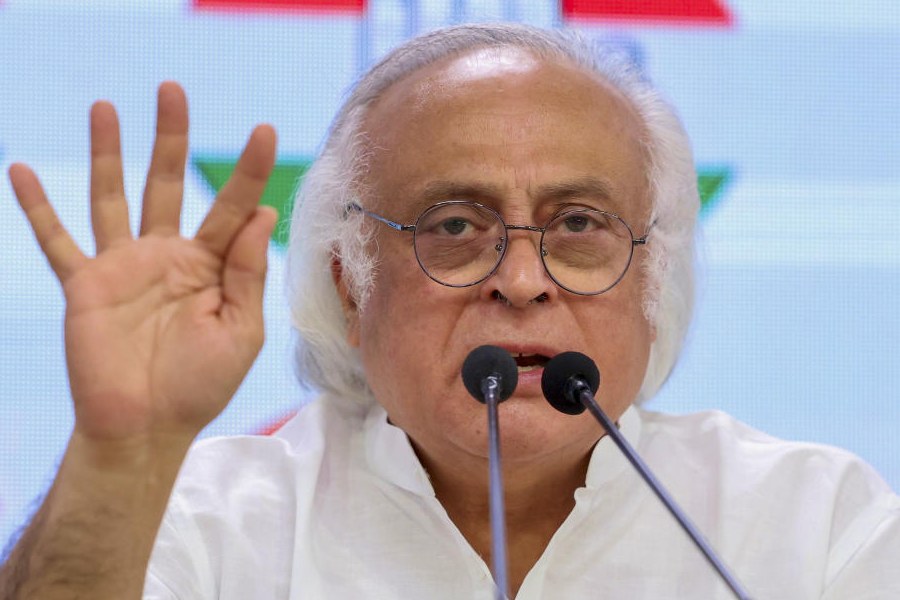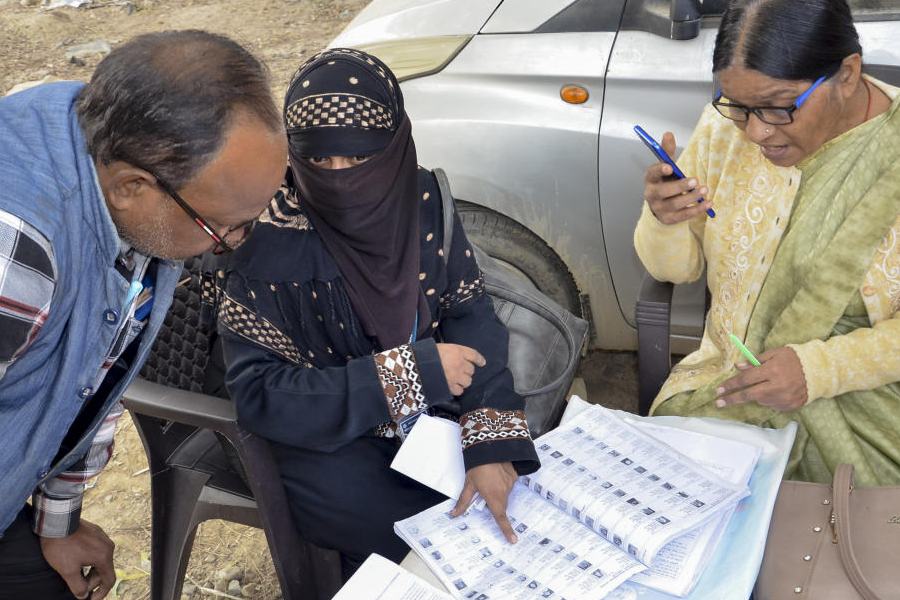In a bid to bolster the road transport network (RTN), a Calcutta-Delhi direct route for the delivery of postal mail was inaugurated at Nabadiganta sub-post office in Sector V on July 1.
Ashok Kumar, the chief post master general of the West Bengal circle, flagged off the first mail van carrying mail, including parcels, at its full capacity of five tonnes.
“So far, we were almost completely reliant on the railway network to reach every corner of the country. That is why every station has an RMS (Railway Mail Service) building or space. After reaching the closest station, we used the road network for last-mile connectivity. Now with the parcel business becoming our most important segment, we have to pay special attention to the movement of parcels,” he said.
The letter business, earlier the department’s mainstay, is in a sunset phase. While the volume of personal letters had plummeted long back, bulk business mail used to keep that segment going. “But due to green initiatives and cost-cutting, even business mail is taking the internet route,” he conceded.
The e-commerce boom has opened up a good opportunity but private players dominate this sector. Though officials were unable to give a definite figure, India Post’s share of the parcel pie is not more than about five per cent, they admitted.
“To flourish in this business,” Kumar pointed out, “the deliverables have to be safe and secure from end to end and the medium of transmission must be under our control. Then we can commit to an expected time of delivery also. The good condition of national highways has bolstered our confidence in the viability of road transportation.”
Improvement of RTN was a policy decision in the 12th Five-Year Plan of 2012-17 as part of broader infrastructure development goals. The postal department has 34 national routes, which in turn connect to 110 state-level routes through a hub-and-spoke model, thereby extending the reach to more than 100 Tier II and III destinations.
The West Bengal circle of the department of post so far was operating three national RTN routes:
- Kolkata-Guwahati via Siliguri and vice versa
- Kolkata Patna via Dhanbad and Gaya and vice versa
- Kolkata-Nagpur via Bhubaneswar and Raipur and vice versa
According to officials, postal mails, including parcels for north India, are currently being sent via the Calcutta-Patna RTN upto Patna and from there via Patna-Delhi via Allahabad, Lucknow and Bareilly and vice versa to Delhi.
The new route will be a non-stop one. “We will save a full day by avoiding the time wasted in loading and unloading at stations. We will also not be dependent on the timings of trains as our vehicle can start the journey according to our schedule,” said Supriyo Ghosh, postmaster general (mails and business development). “Our competitors are also road-based as air travel pushes up costs,” he added.
The vehicle will ply daily from Calcutta to Delhi, carrying parcels for Jammu & Kashmir, Himachal Pradesh, Punjab, Haryana, Uttar Pradesh and Uttarakhand other than Delhi.
It will be a point-to-point delivery with security surveillance. “GPS is installed on the vehicle, which will allow us to track the movement of mail,” Kumar said.
The officials point out that while the postal network, being a public service, covers the remotest of places and the postman will travel even if there is a single letter to deliver, the private players target only creamy sectors where traffic is more and the packets are heavier.
“The government is now giving us the infrastructure to compete for business in the creamy sector also so that we can reduce the deficit that is the fallout of operating in unprofitable sectors,” Kumar said. Another RTN to Chennai is in the pipeline.

